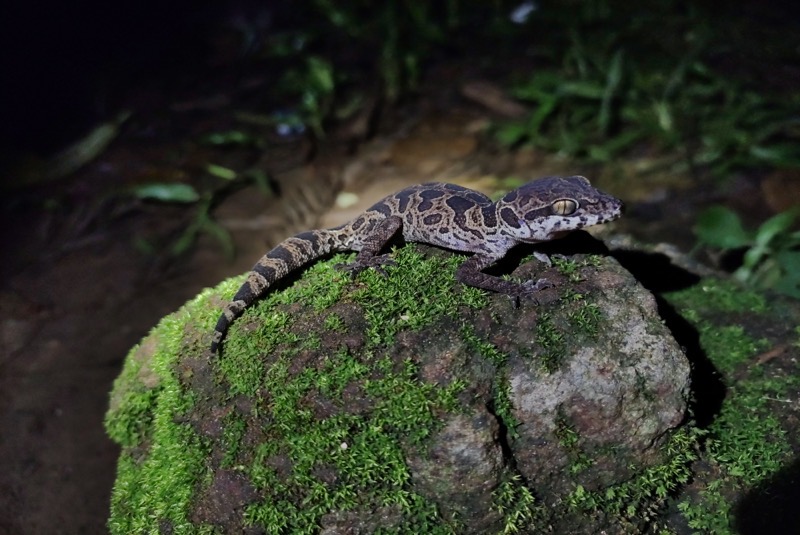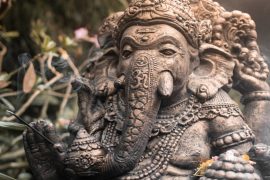In 1877, a British Colonel, R H Beddome, discovered and captured a gecko in Odisha’s Jeypore Hills. He called it the Jeypore Ground Gecko. No one was ever able to find it afterwards, and it was declared extinct. However, 133 years later, scientists based in Bangalore found it in the Eastern Ghats.
A team of scientists from the Centre for Ecological Sciences (CES), the Indian Institute of Science (IIS) Bangalore, the Bombay Natural History Society, and the Villanova University of the United States conducted an extensive search for two years.
The search for the unique Gecko began in 2008-2009. Ishan Agrawal, a scholar who was then pursuing a PhD at CES, was determined to find the Jeypore Gecko; he wished to learn more about the history of its evolution. The records of the Gecko were limited. Beddome only recorded his observations of a single male specimen and pointed out its unique morphology.
‘Its unique morphology and the fact that it was not known apart from a single specimen motivated my search. G. Jeyporensis is unique in its dorsal scalation as well as phylogenetic position,’ Agrawal told Mongabay.com. ‘All other Indian species are complexes, while G. jeyporensis is a relict lineage found only in high elevations of the Eastern Ghats.’
Agrawal put a lot of work behind the project before he could begin his search. Beddome had mentioned that the specimen was found at 4,200 ft, under a boulder, on Patinghe Hill, Jeypore. Agrawal had to map out a journey to the Eastern Ghats following the Colonel’s footsteps a century ago.
In 2010, a team of four got together to put Agrawal’s plan into action. There was little hope in the project after they thoroughly searched the Koraput district and found no sign of the long-lost reptile. One day, with ‘just a little bit of luck,’ as the CES student later put it, the team found success, and they found the Geckoella Jeyporensis.
In 2011, the team got back together with some additions and ventured through Andhra Pradesh and Odisha. Once again, Agrawal found success in his quest. Along with Agrawal, Aniruddha Dutta-Roy did most of the fieldwork. Varad Giri, a naturalist at Bombay Natural History Society, and Aaron Bauer from Villanova University worked on taxonomy.
The Eastern Ghats is not popular as a habitat for endemic species. However, the Jeypore Gecko is restricted to a small area here, found only at an elevation of 3,900 to 4,265 feet, in an area estimated to be only 20 square kilometres. Their rediscovery created a curiosity regarding undiscovered species that may be living in these areas.
‘There are a number of species that have not been recorded since their original descriptions or are known from few localities,’ the study states. ‘While some of these species may be intrinsically rare, range-restricted or infrequently encountered due to ecological traits such as seasonality, fossoriality or arboreality (high canopy species); many so-called lost species have simply not been searched for by trained field biologists.’
Geckos were found in areas that are subject to significant anthropogenic pressures and are not officially protected. The IUCN immediately classified it as Critically Endangered owing to serious threats to its habitat. There has been significant deforestation, conversion of forest to coffee plantations and farmland, and mining is impending in the area.
‘Even if it is widely distributed in the region, the potential habitat available to G. Jeyporensis may be restricted by its presumed habitat preference,’ Agrawal wrote in the study. ‘Deomali and Galikonda, the only localities from where Geckoella Jeyporensis is definitely known, require immediate protection and surveys in the region are needed to determine where else [it] occurs.’
The article explains that forests at Galikonda are converted into plantations, and only a few native shade trees survive. The high elevations forests of Deomali thrive in sheltered areas but have ‘stunted trees, rich leaf litter and epiphytic growth.’
The research highlights the need for fundamental biodiversity inventories throughout India. Especially regions like the Eastern Ghats have received much less attention in comparison to the priced Western Ghats.
Although the Eastern Ghats share many floral and faunal characteristics with the Western, their distinctiveness and biological vigour are frequently ignored. The Eastern Ghats are separated by four main rivers, while the renowned Western Ghats comprise an essentially uninterrupted mountain panorama.
‘The main threats facing the Eastern Ghats include deforestation, hydropower projects, bauxite mining and road widening,’ Farida Tampal, state director of World Wide Fund for Nature (WWF) India in Telangana, informed Mongabay.
Massive ponds created by dams and their reservoirs between the borders of Andhra Pradesh and Odisha have drowned large areas of forest, converting hilltops into islands and isolating wild animals. Many reptiles suffer the same fate as Jeypore Gecko due to habitat loss.
According to Tampal, the rediscovery of the Indian golden Gecko (Calodactylodes aureus), followed by the scientific resuscitation of the Jeypore ground gecko, sparked a revival of public interest in preserving the Eastern Ghats. However, a geopolitical realignment has resulted in a significant conservation setback. ‘Several researchers have begun to study the faunal diversity of this incredible region, but the [anthropogenic] threats… seem to loom larger,’ she said.
Following the partition of Andhra Pradesh into two states in 2014, the Andhra Pradesh administration sought to catch up economically. They are interested in the protected regions of the Eastern Ghats to satisfy their land, irrigation, and mining requirements, which means even greater development demands on the already-stressed Eastern Ghats.
The Eastern Ghats and its dependent species would be equally threatened if uncontrolled development continues. Agarwal is concerned that if a proactive conservation strategy for the Jeypore ground gecko is not implemented quickly, it will face a challenging climb back from the verge of extinction. ‘[T]here is no understanding of its ecology and distribution, and it is likely that the species will not persist indefinitely in these marginal habitats,’ he said.
According to Agarwal, formal habitat preservation is required to guarantee the survival of the region’s unique geckos. Despite the many difficulties, Agarwal is optimistic about the future of the Jeypore ground gecko. He thinks that if the reserve forests, where G. Jeyporensis currently lives, survive, hope will remain.
‘The good thing is the species is also found in degraded habitats and coffee plantations. If key reserve forest areas are protected, and some simple measures followed in coffee plantations, it is likely we can save this species,’ he said, advocating collaborative action by the public and corporate sectors and local communities.
-30-
Copyright©Madras Courier, All Rights Reserved. You may share using our article tools. Please don't cut articles from madrascourier.com and redistribute by email, post to the web, mobile phone or social media.Please send in your feed back and comments to editor@madrascourier.com











